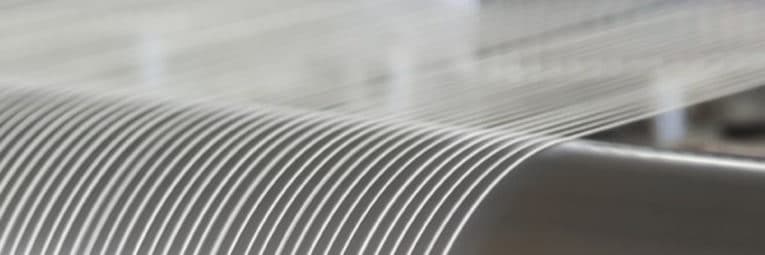
- Home
- All Posts
- Control System
- How to Design Tension Control System
Blog

How to Design Tension Control System
In a slitting and rewinding operation, improper tension control can have large effect on waste and downtime, so it’s critical to maintain the good web tension to ensure the stable web transport. However, before you design a tension control system for your machinery, you should know about what tension is best for your process or product. Material property, thickness, width, speed, size of rolls, etc, all of these should be considered for designing a tension control system. Experienced machine builders just like Leap can accumulate the results of these experiences from various web processing applications and turn them into standards. Generally, the complete tension control system includes braking system and control system, these two components work together to reach and maintain the desired tension.
Braking system for tension control
Braking systme is used on unwinds to adjust the torque to get desired tension, and commonly comes in two variations of mechanical braking and motor generated braking. They both offer the important torque on shaft or chuck in proportion to the proper tension.
Mechanical braking is a cost-effective solution which can work through either pneumatic pressure or electro-magnetic power to produce the proper amount of braking force, it’s easy to install and operate and the brake pads should be replaced on time. However, if the torque required to drive the parent roll exceeds the minimum controllable torque of the mechanical brake, a motorized unwind must be considered.
Motor drived brake has many advantages when a parent roll must be accelerated to running speed promptly, the web material is highly elastic, or the roll is seriously out of round. The unwind shaft is drived by the motor and the web material can enter into the process with proper tension, it’s beneficial to the materials which are too delicate to be pulled. Advanced AC motors have ability to harness the power and redirect it to pull rolls or winding spindle drives, thus reduce the overall power consumption.
Web tension control system
Tension control system is designed to offer the required signal to the braking system to regulate the web tension. There are types of control systems including open loop or closed loop and others.
Open-loop control system is simple, low-cost and effective option to provide constant web tension for your slitting and rewinding process. Typically open-loop systems measure or calculate tension by a meter or some types of display, as the unwinding roll’s diameter changes, the operator can regulate the device manually to maintain the constant tension to the desired value in the process. Besides, open-loop method can be also computer based and need some datas to determine the values of braking torque is required at the unwind shaft as a known supply pressure or motor torque is set. The control system can adjust the braking torque automatically according to the change of unwinding roll’s diameter which can be calculated by the specification of web materials.
Since there is no feedback to monitor and adjust control, the accuracy of the open-loose tension control is determined by the accuracy of roll diameter calculation and the linear torque device attached to the roll of web material. Under ideal conditions, open-loop system can provide tension accuracy within about 10-20% of desired setpoint. If the system degrades mechanically, or the linearity of the torque device is sub-standard, the accuracy of tension control will be compromised and closed-loop tension control with high accuracy is required.
Closed-Loop control system, also known as a feedback control system, utilizes continuous tension measurement to automatically change commands to braking system to ensure the proper web tension. Feedback system is accomplished with a force measuring roller installed in the web path, and offer a signal to control system which is compared to the desired setpoint, and further to minimize the difference, or error between these two values. Another feedback method is to utilize a translating dancer roller which has been calibrated to exert a force to achieve a desired tension in the web, and uses a device to measure its position along its translating path. Since the force exerted is constant, either change in web tension will cause the change in position. The position signal is then used to adjust the process to maintain the dancer roller in a fixed position. The use of dancer roll has many advantages in certain applications including automatic splicing unwind systems, to absorb minor tension disturbances that occur during the splicing sequence, and not create web handling defects.
For a well-designed closed loop system, tension tolerance values should be on the order of 2-5% tension variability. Closed loop systems can be easier to change the tension setpoint to repeatable levels for various materials and widths. It also has ability to adjust quickly to speed changes. So when considering the proper method of tension control system, the tension tolerance is the point. If your products or process can withstand the level of tension variability which will not cause the damage or deformation of material or other issues, design a open loop tension control system may be a good choice for you.
About Lvjie
Serch
Recent Posts
-
Overview of UHMWPE Separato... September 20, 2024
-
Overview of PVC Slitter Rew... July 2, 2024
-
Overview of Pre-coated Film... April 25, 2024
-
Overview of stretch film sl... March 11, 2024
-
Application of BOPP Tape Sl... November 29, 2023
Categories
- All Posts (28)
- Others (1)
- Unwinding Technology (3)
- Rewinding Technology (7)
- Slitting System (18)
- Control System (4)
Contact Info

Xiongzhou Street, Liuhe District, Nanjing City, 211511, China
Phone: 86 025 86555699Email: info@film-slitter.com
Recent Posts
-
Overview of UHMWPE Separato... September 20, 2024
-
Overview of PVC Slitter Rew... July 2, 2024
-
Overview of Pre-coated Film... April 25, 2024
-
Overview of stretch film sl... March 11, 2024
-
Application of BOPP Tape Sl... November 29, 2023
